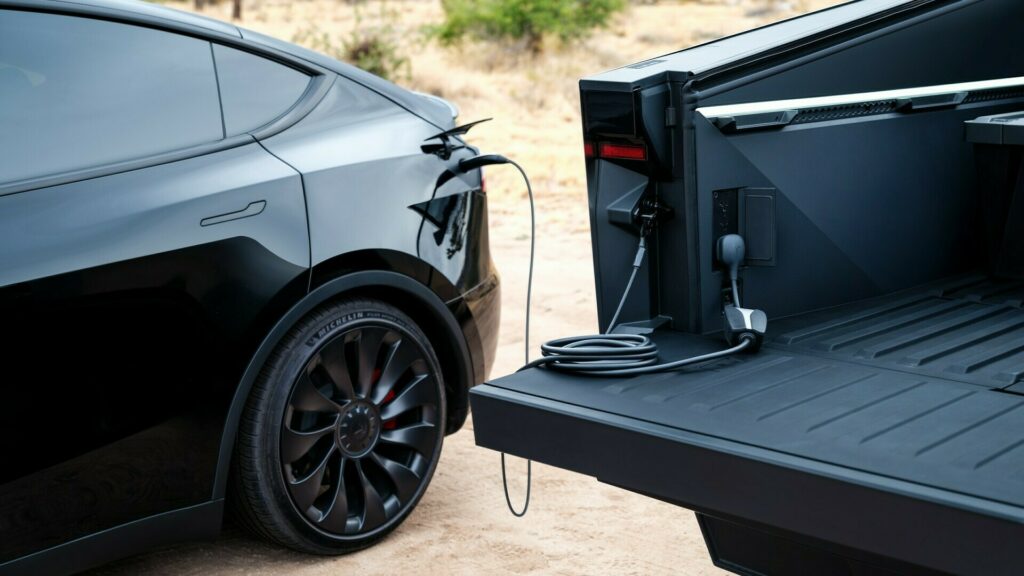Of the many design decisions that went into the Tesla Cybertruck, running its low power side on 48 volts might be one of the most important. That’s a huge break away from the rest of the industry. Now, Ford’s CEO just confirmed that Tesla sent him (and presumably other auto CEOs) the instructions on how to do it themselves.
When the Model S came out, it sparked the transition to the electric vehicles we see today. Now, this shift to a full 48-volt electrical architecture could do the same thing. In short, using a 48v system saves on physical material (copper) costs and, in turn, helps to keep weight down too. It’s one of the reasons that the Cybertruck weighs less than a Rivian R1T despite being bigger.
In his video review of the new boxy pickup, Jason Cammisa reported that Tesla sent a document to every automotive CEO entitled “How To Build A 48v Vehicle.” Now, Jim Farley, CEO of Ford both confirmed the document and thanked Elon Musk in the process. Musk responded with a simple “You’re Welcome” on his X platform.
Read: Ouch! Transporter Flips Over Knocking Down GMC Hummer EV And Mercedes
Making a 48v vehicle isn’t something automakers are only just thinking about though. They’ve considered it to one degree or another over the years but there’s been a problem. Suppliers make components for 12v systems and evidently, neither the automakers nor the suppliers were willing to pony up the cash it would’ve taken to transition to 48v components. Tesla, being a company that owns so much of what it builds, just did it.
The benefits go beyond weight and material savings though. 48v systems allow for more current to run through the vehicle and that provides the ability to power more components, including the steer-by-wire system in the Cybertruck, the first of its kind in a production vehicle.
According to Cammisa, just that one component requires triple the current that the average house could handle in the 1970s. As vehicles continue to add more electric components they’ll no doubt need more power. Don’t be surprised if others follow in Tesla’s footsteps, again, soon.




